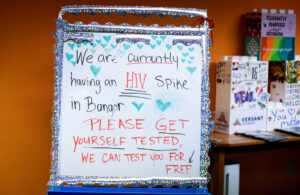
A new treatment combination has demonstrated improved outcomes for older and frail patients diagnosed with multiple myeloma. The regimen, which includes daratumumab (subcutaneous formulation known as Darzalex Faspro), lenalidomide (Revlimid), and limited doses of dexamethasone, yielded a significant increase in progression-free survival (PFS) compared to the standard treatment of lenalidomide with continuous dexamethasone. These findings stem from the phase 3 IFM2017-03 trial, as published in Lancet Oncology.
The trial involved a median follow-up of 46.3 months and revealed that patients in the dexamethasone-sparing group (n = 200) experienced a median PFS of 53.4 months (95% confidence interval [CI], 35.3-not reached) compared to just 22.5 months (95% CI, 16.5-39.0) for those receiving the standard treatment (n = 95). The hazard ratio (HR) of 0.51 (95% CI, 0.37-0.70; P < .0001) indicates a clear advantage of the new approach across most patient subgroups, which included variations in age, performance status, and disease stage. Lead author Salomon Manier, MD PhD, an associate professor in the Department of Hematology at the University Hospital of Lille in France, emphasized the challenges of treating older patients with multiple myeloma. He noted that these patients often have different fitness levels and treatment tolerances, complicating management decisions. “Although lenalidomide plus dexamethasone represents a previous standard of care, it is still widely used globally as an all-oral regimen for frail patients,” Manier stated.
Dexamethasone has been a cornerstone treatment for multiple myeloma but is associated with various adverse effects (AEs), including infections and hypertension. The aim of the trial was to reduce the exposure to dexamethasone, thereby minimizing the risk of AEs.
Study Design and Results
The IFM2017-03 trial was a randomized, open-label study that enrolled patients aged 65 years and older who had newly diagnosed multiple myeloma and were not candidates for high-dose chemotherapy or autologous stem cell transplant. Participants were required to have a frailty score of at least 2, ensuring that the study specifically addressed a vulnerable patient population.
Patients were randomly assigned in a 2:1 ratio. The experimental group received subcutaneous daratumumab at 1800 mg weekly for the first two cycles, followed by biweekly and monthly doses, combined with lenalidomide at 25 mg for the first 21 days of each 28-day cycle and limited dexamethasone at 20 mg for the first two cycles. The control group received lenalidomide in combination with continuous dexamethasone at the same dosage.
The primary endpoint of the study was PFS, while secondary endpoints included overall survival (OS), overall response rate (ORR), and safety profiles. The dexamethasone-sparing group achieved an ORR of 92%, compared to 85% in the control arm. Additionally, the rates of very good partial response (VGPR) or better were 69% versus 51%, with a statistically significant difference (P = .0050).
For overall survival, the median in the dexamethasone-sparing group was not reached, while the control group had a median OS of 47.3 months (95% CI, 36-NR), with a HR of 0.52 (95% CI, 0.35-0.77; P = .0001).
Safety and Adverse Effects
The safety profile of the new regimen was closely monitored. Both groups reported similar rates of any-grade AEs at 98%. Serious AEs were reported in 63% of the dexamethasone-sparing group compared to 69% in the control group. Notably, rates of grade 3 or higher AEs were 89% in the experimental arm versus 79% in the control group.
The trial also highlighted the need for careful management of AEs, particularly among patients with higher frailty scores. Infections such as pneumonia were comparable between the groups, although pneumonia was more prevalent in the control group among patients with frailty scores of 4 or 5.
Despite the promising results, AEs contributed to treatment discontinuation in 30% of the experimental patients compared to 34% in the control arm. AEs led to the discontinuation of all drugs in 18% and 24% of patients, respectively.
In conclusion, the IFM2017-03 trial presents compelling evidence for the efficacy of a dexamethasone-sparing regimen combining daratumumab and lenalidomide in an older, frail patient population with newly diagnosed multiple myeloma. These findings may reshape treatment approaches for this vulnerable group, allowing for better clinical outcomes while minimizing treatment-related complications.






